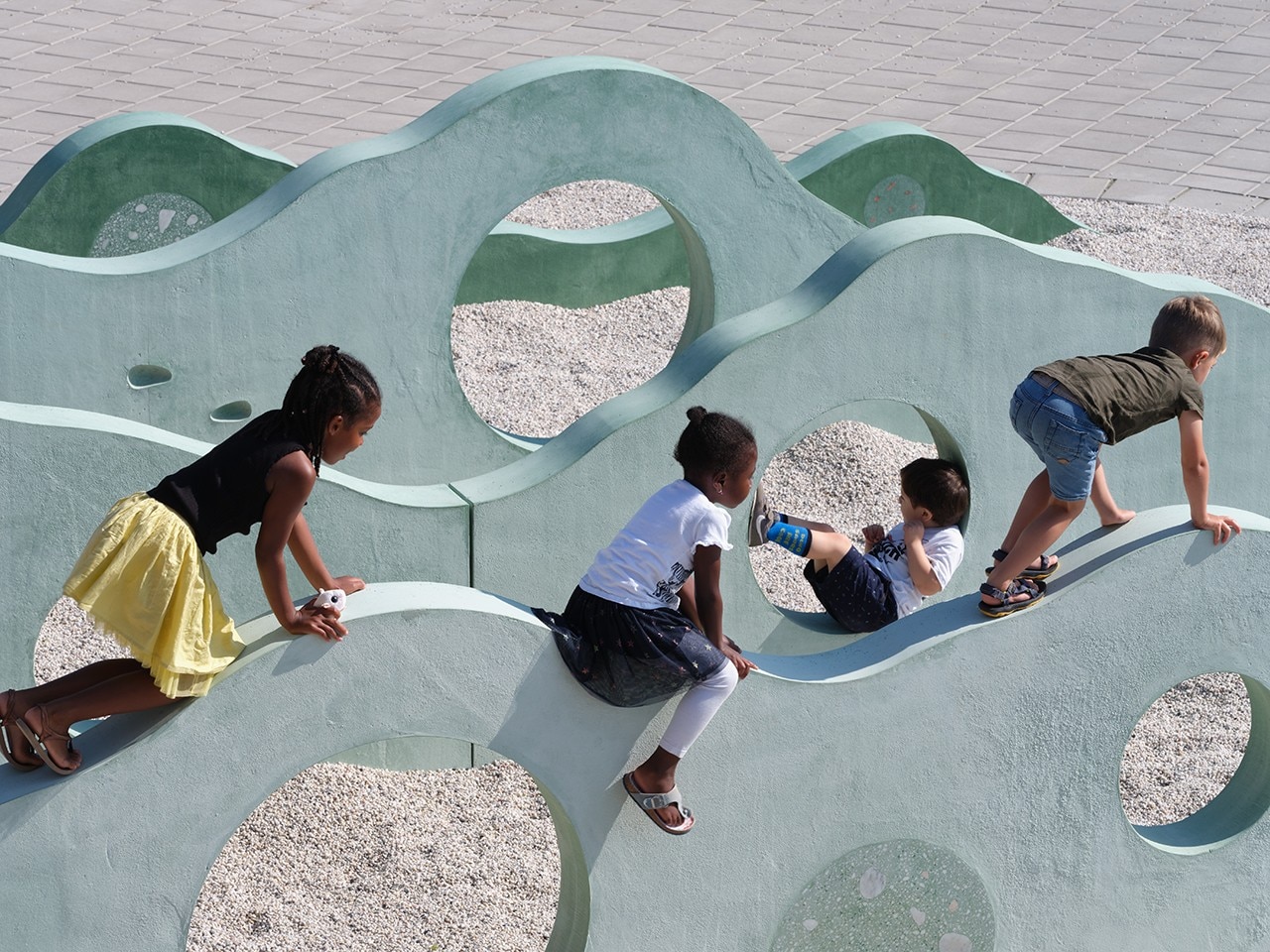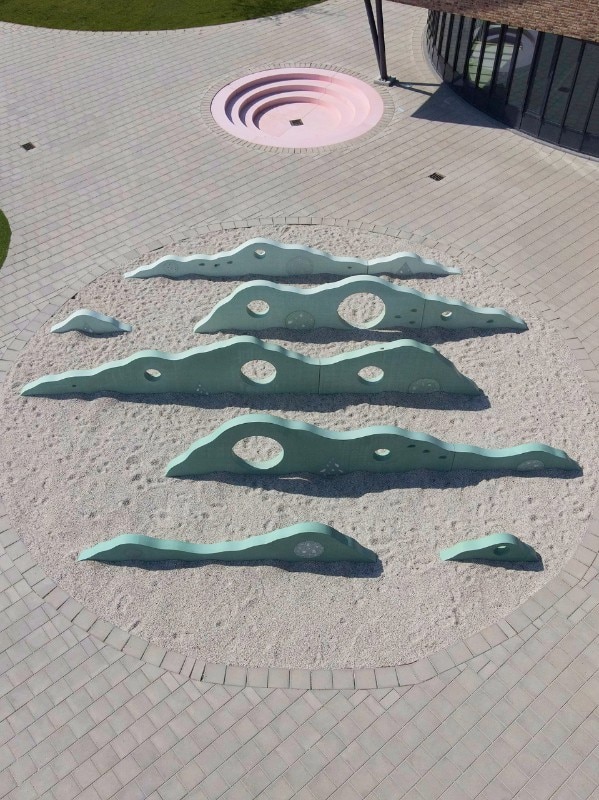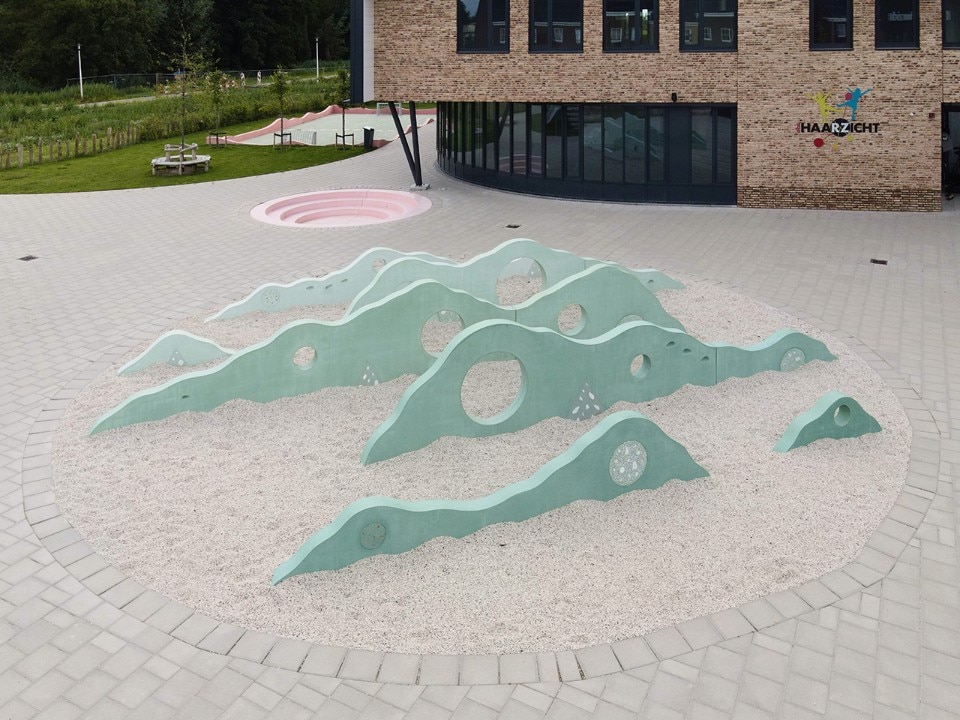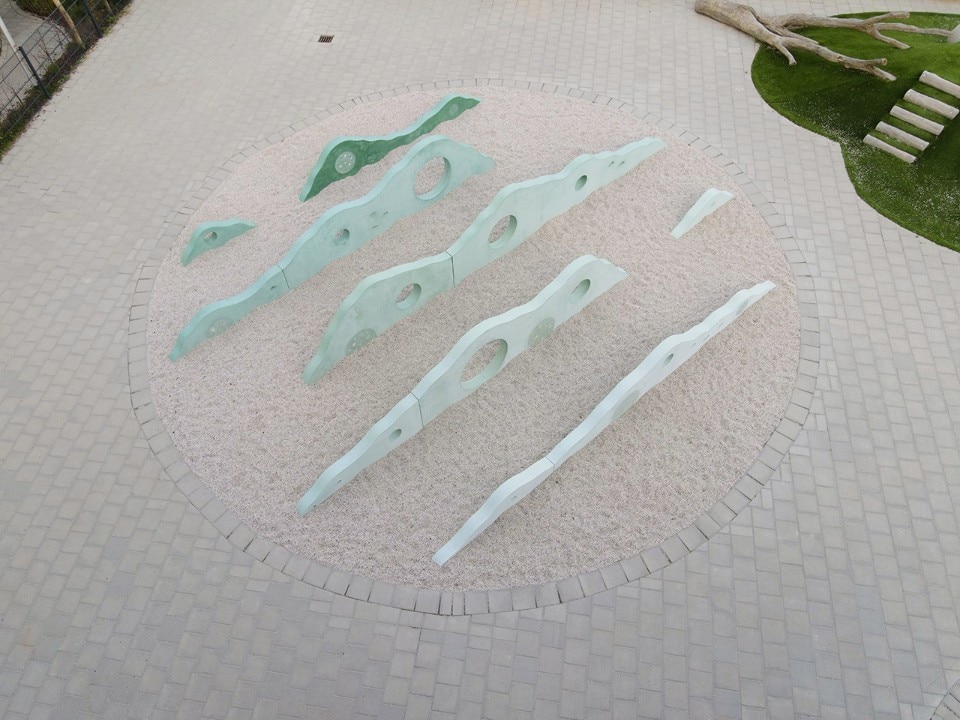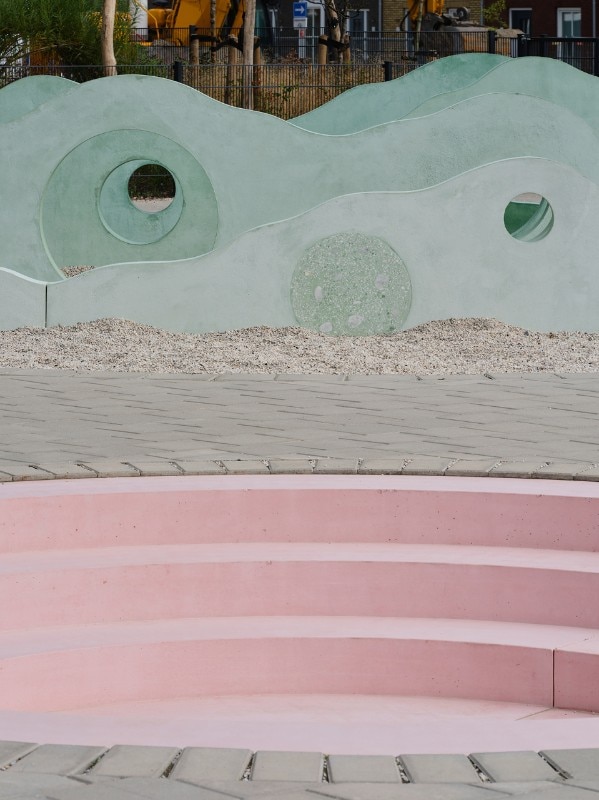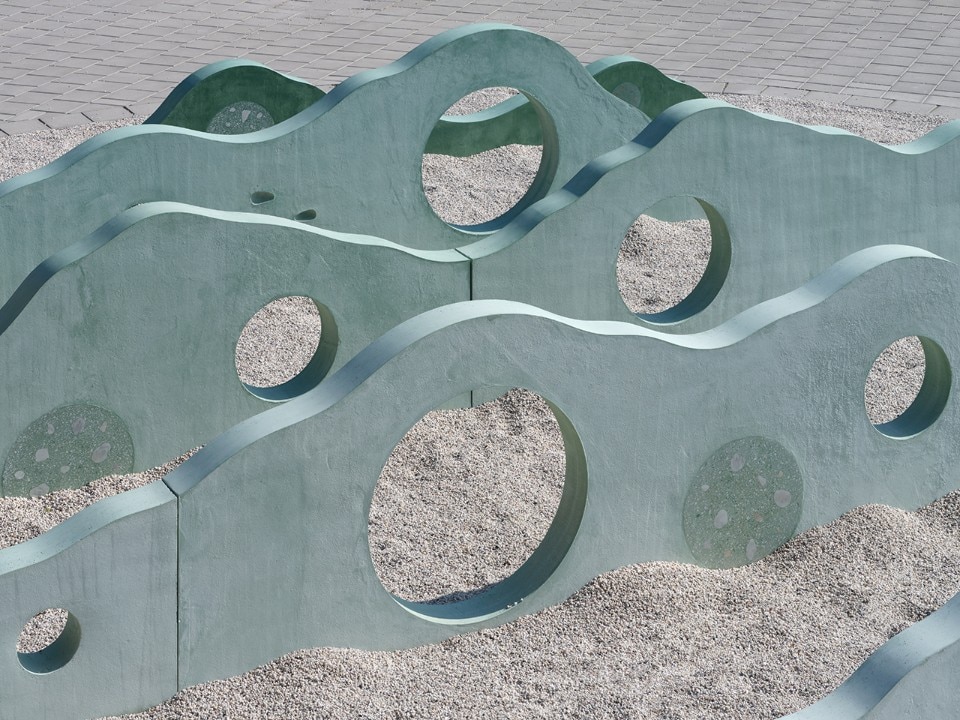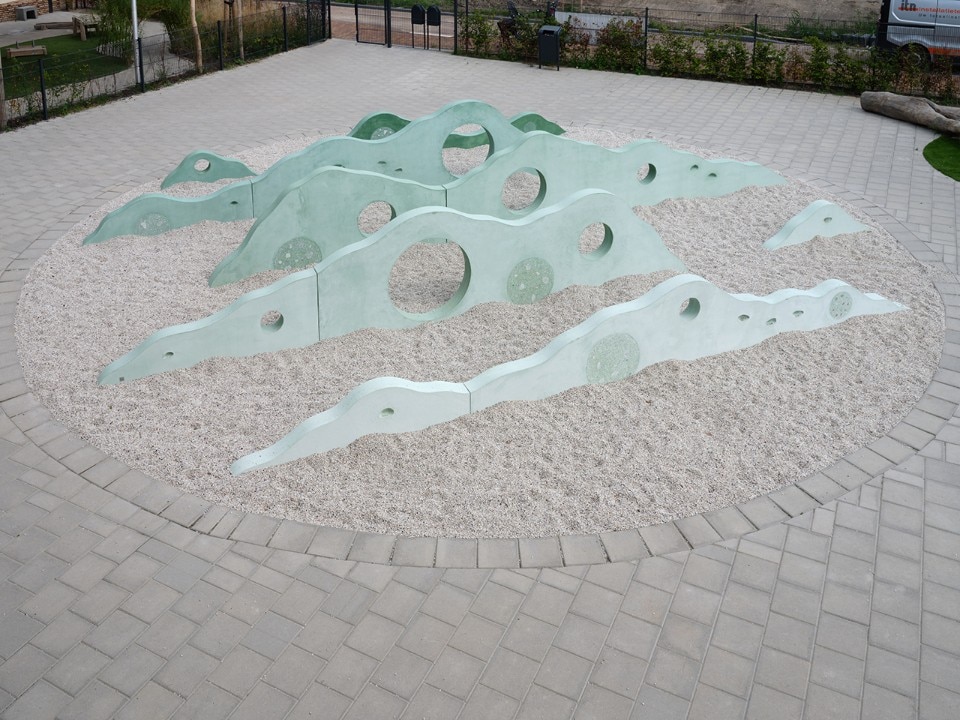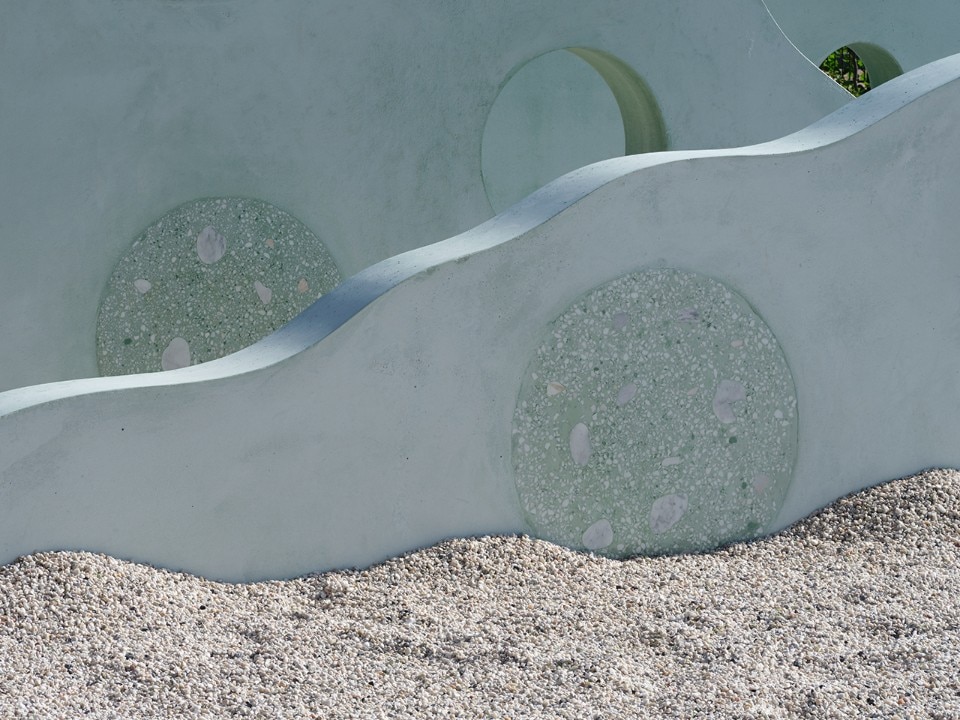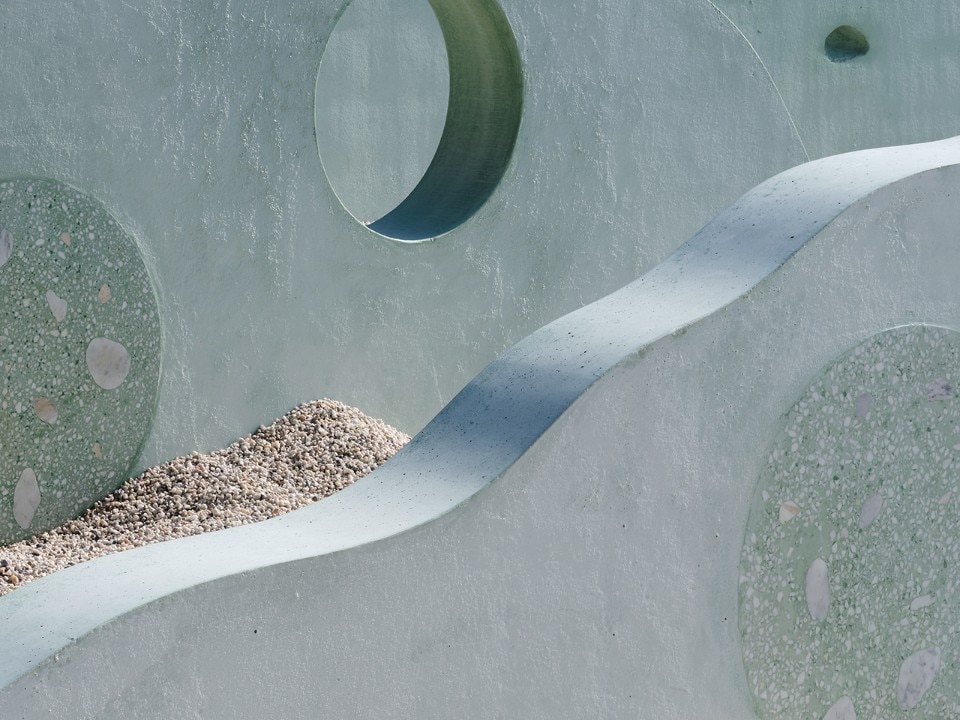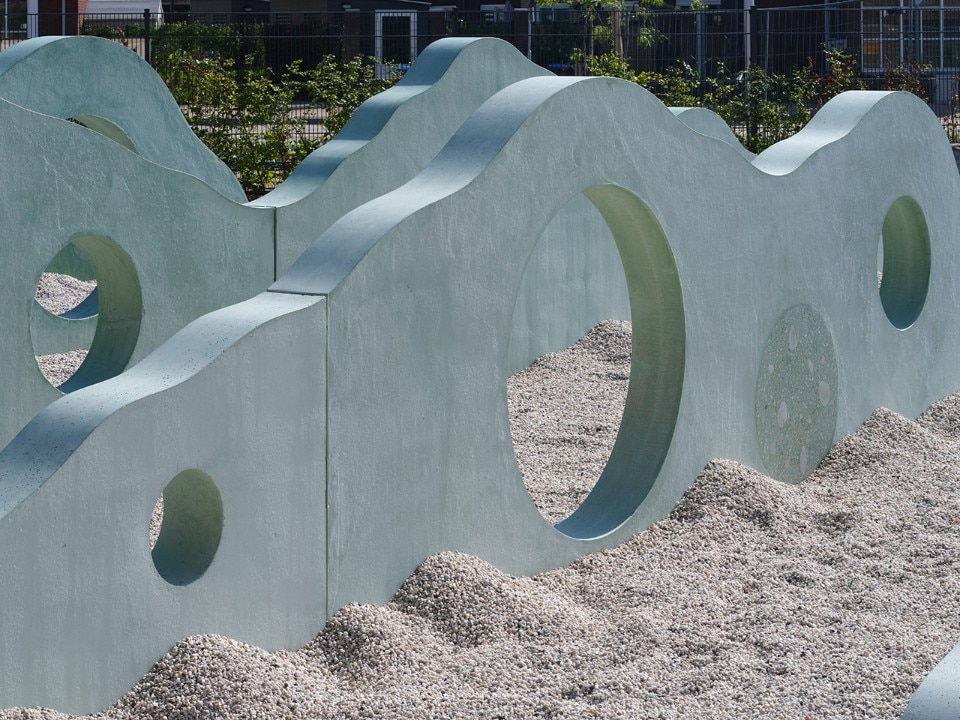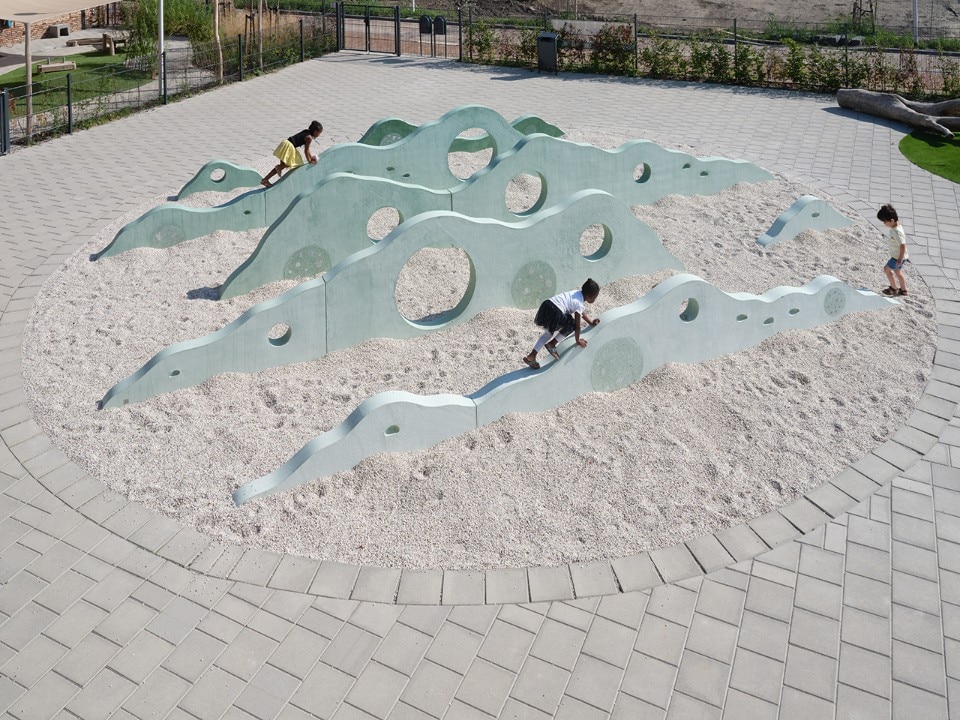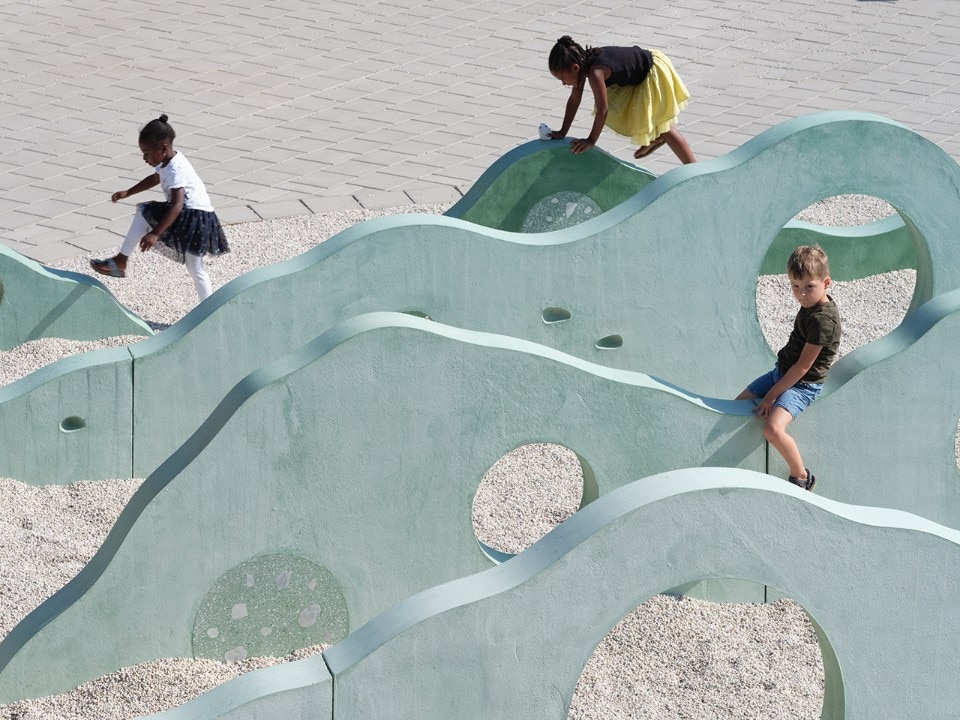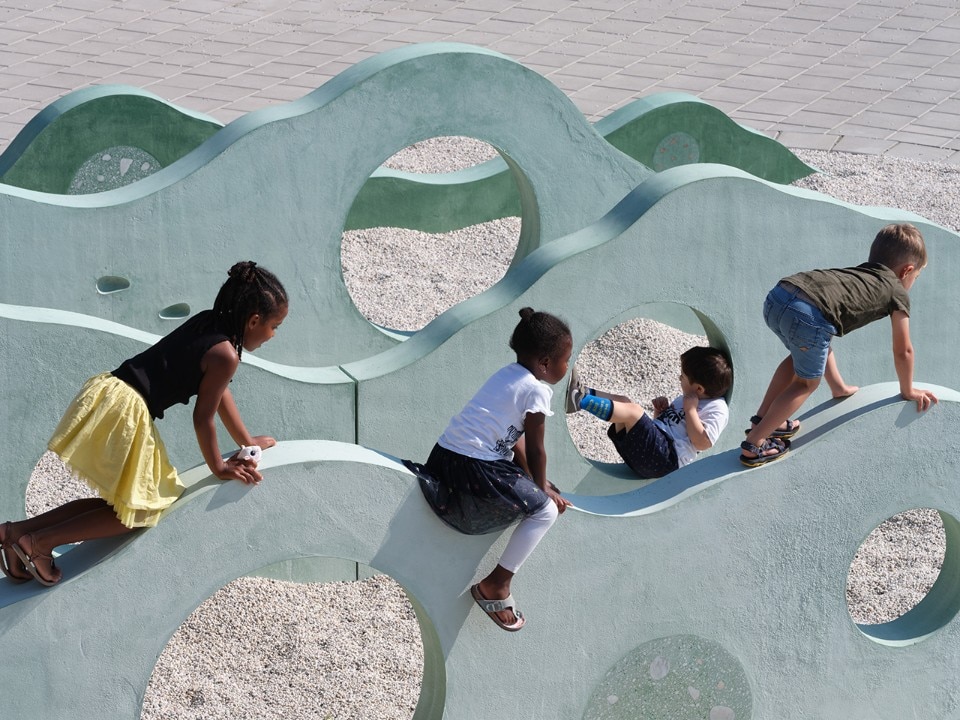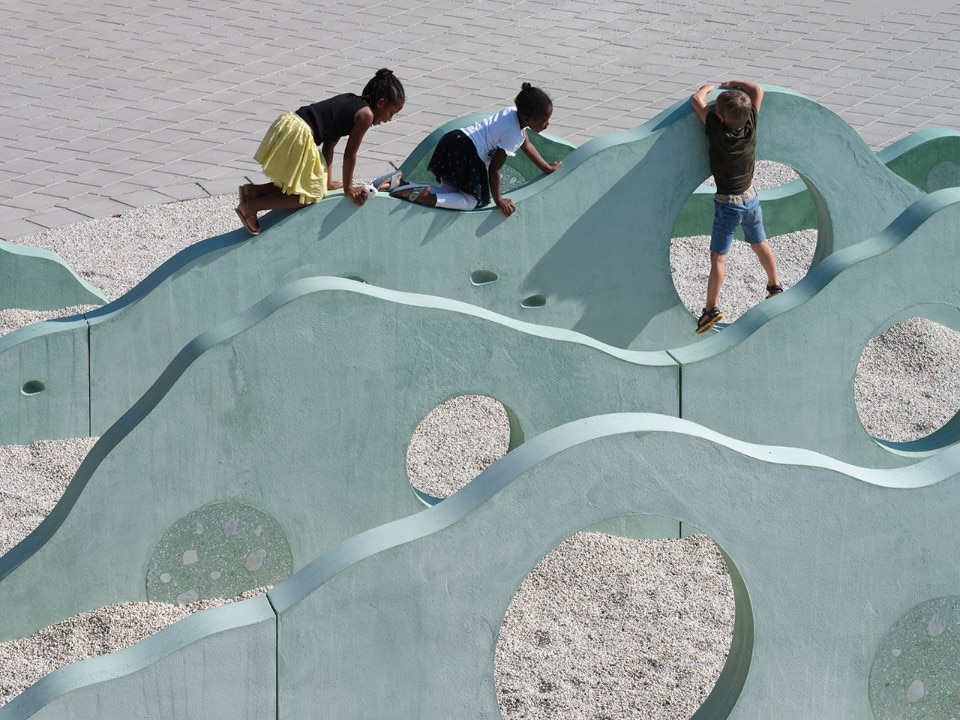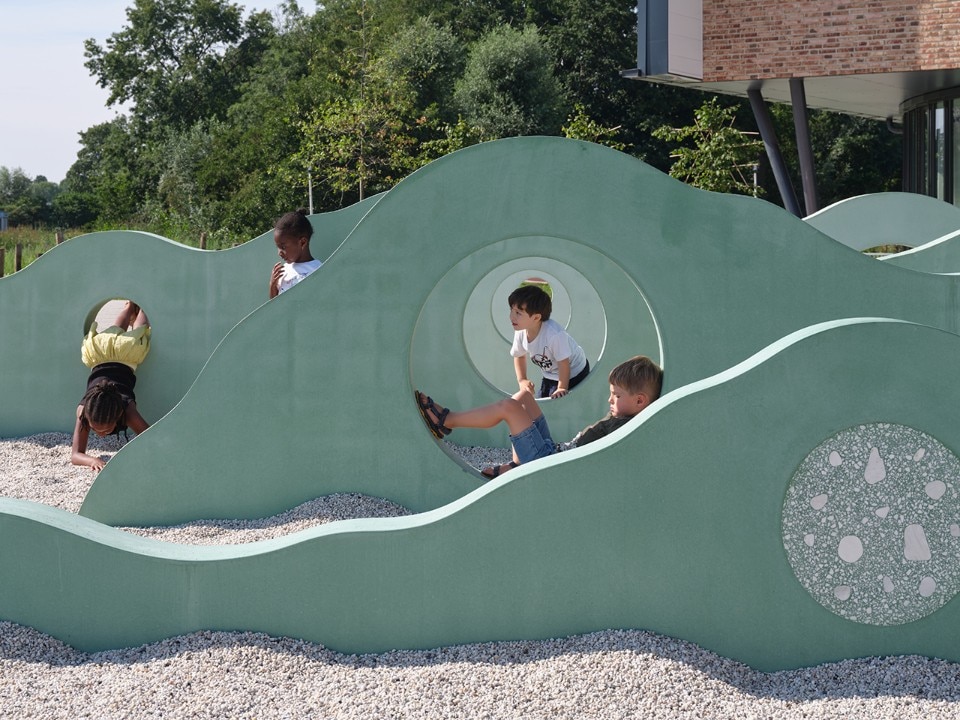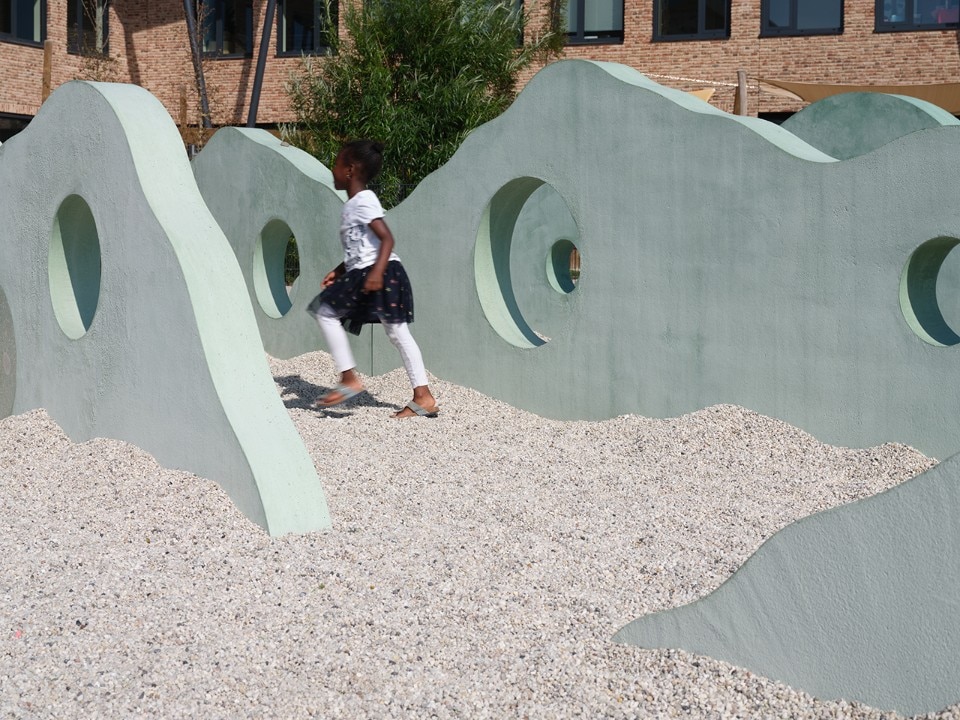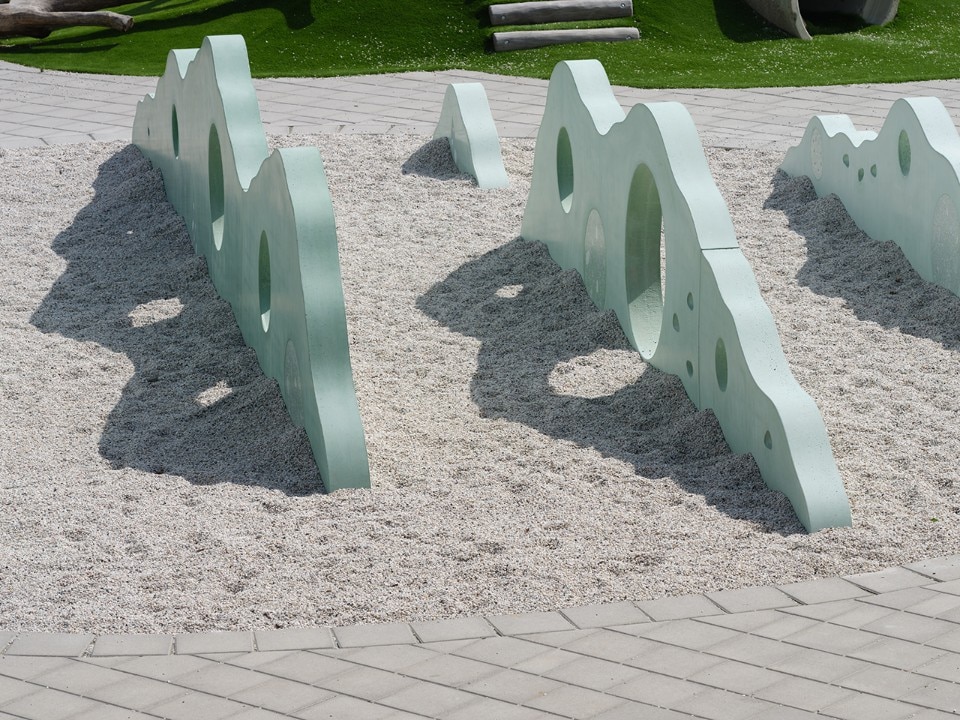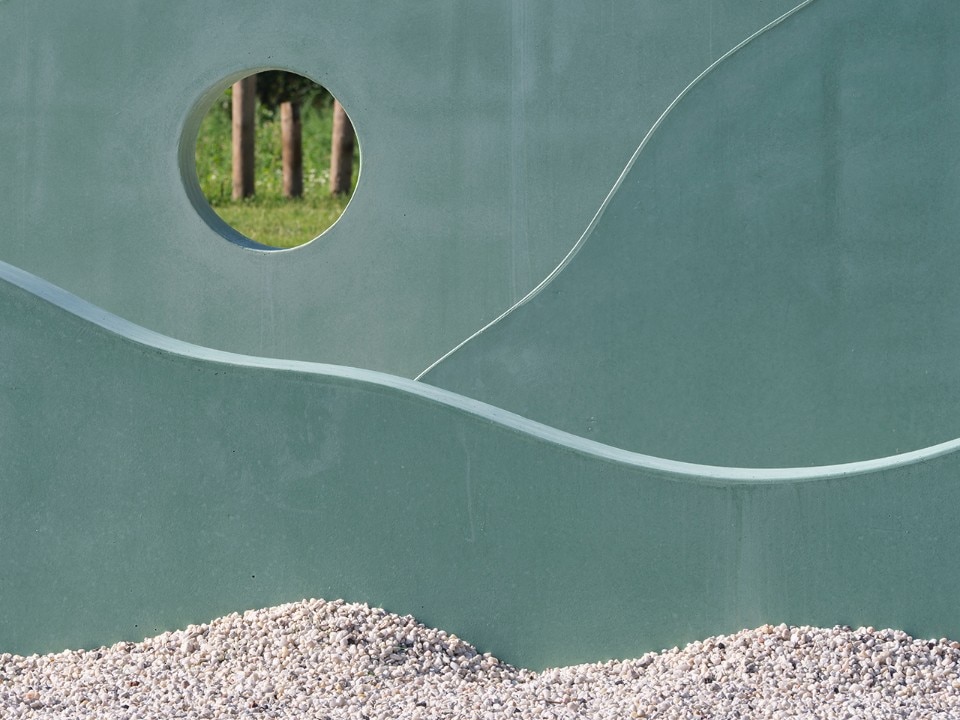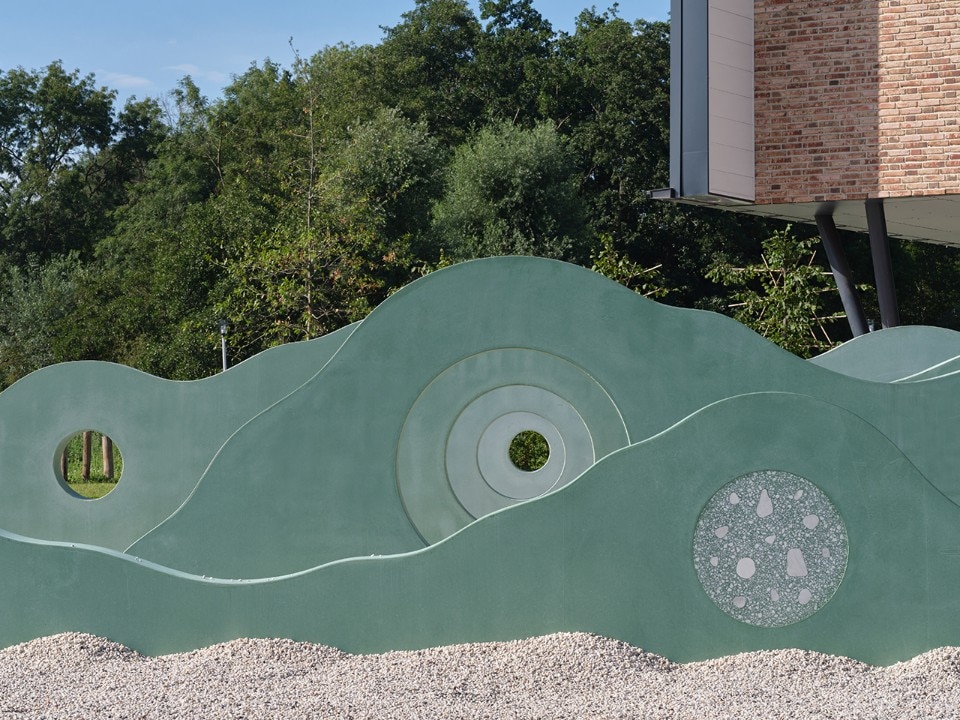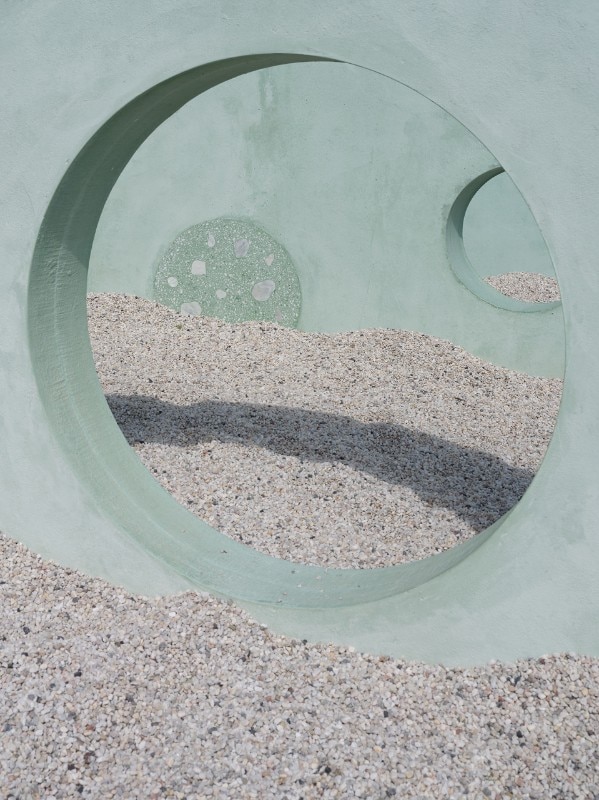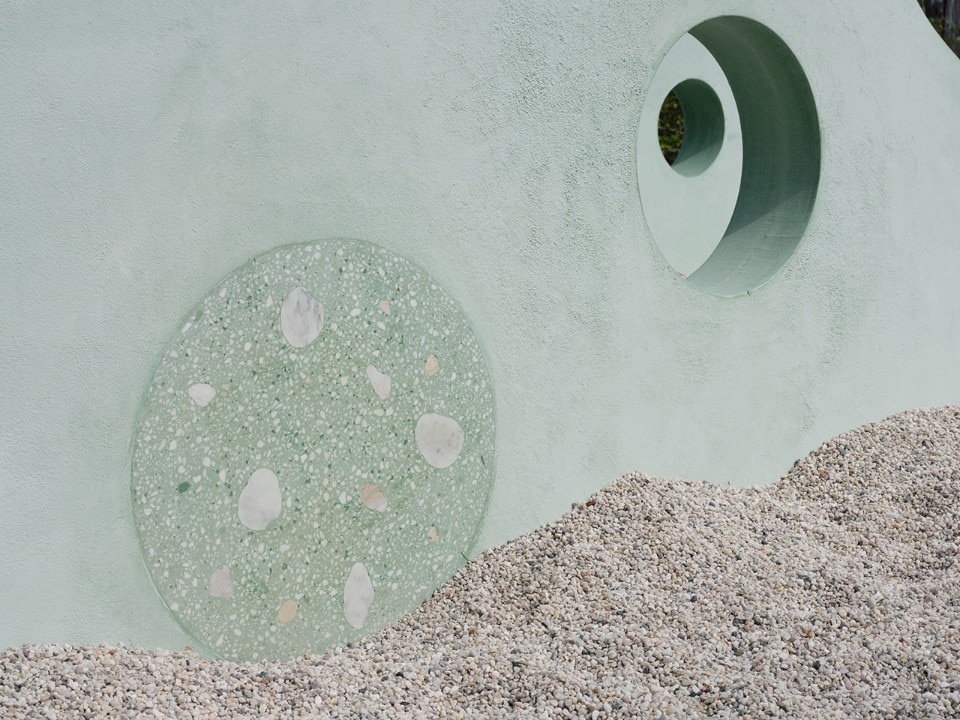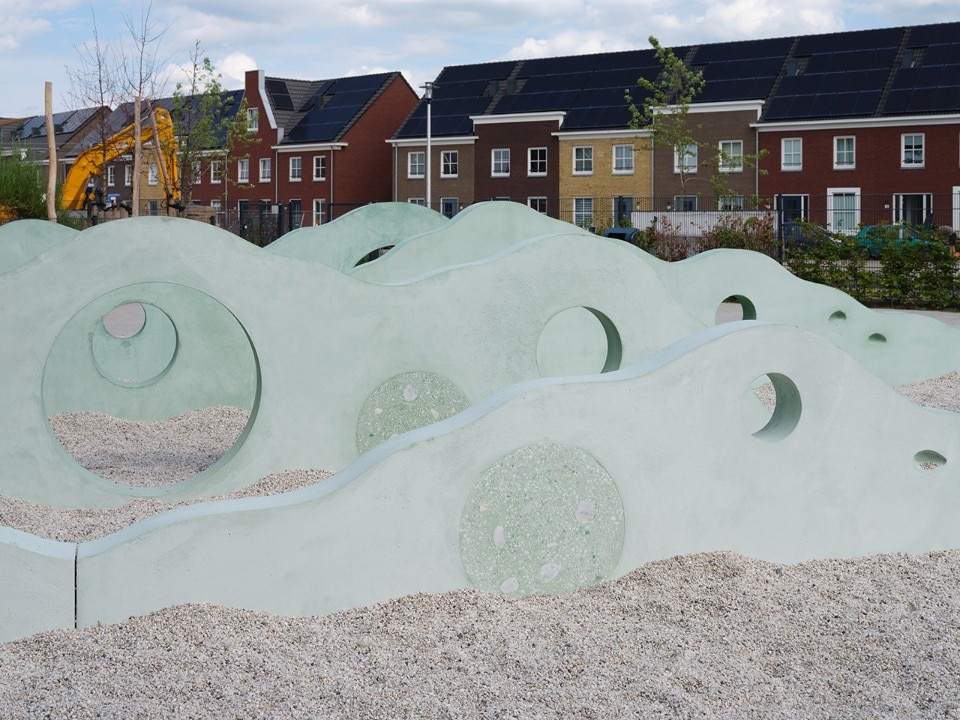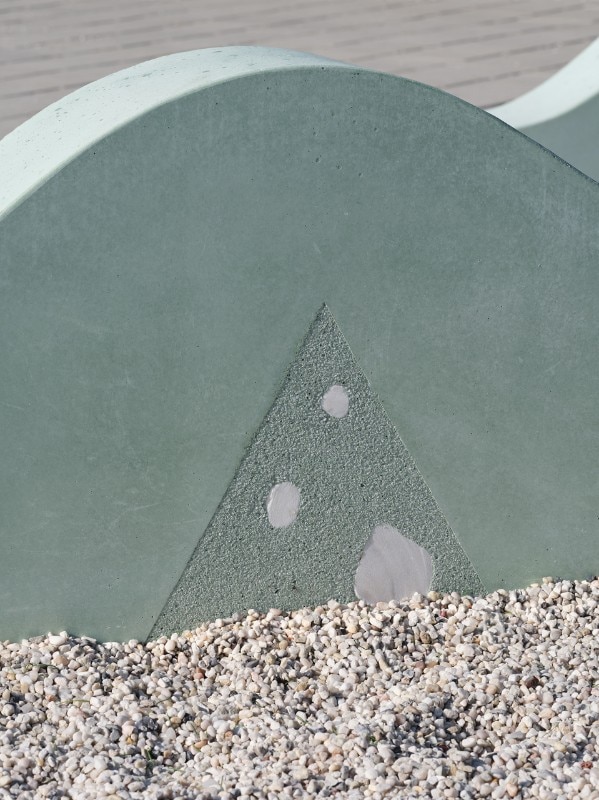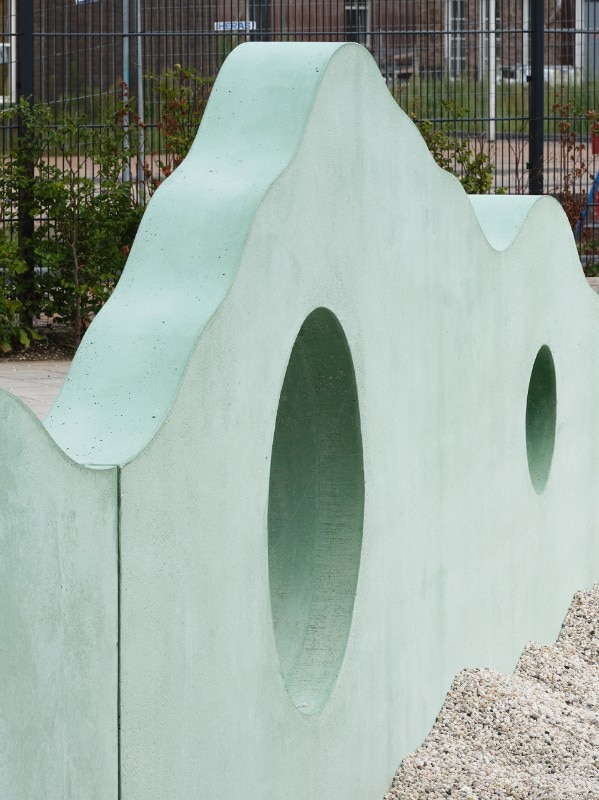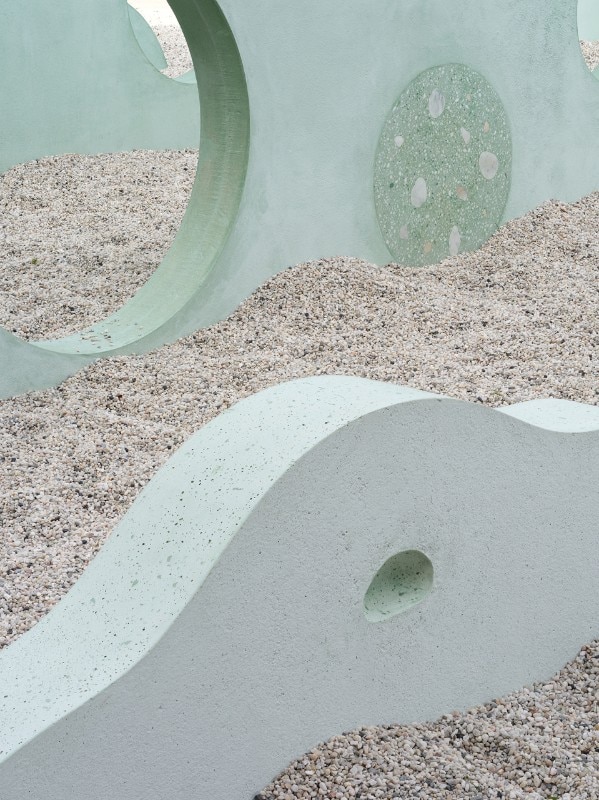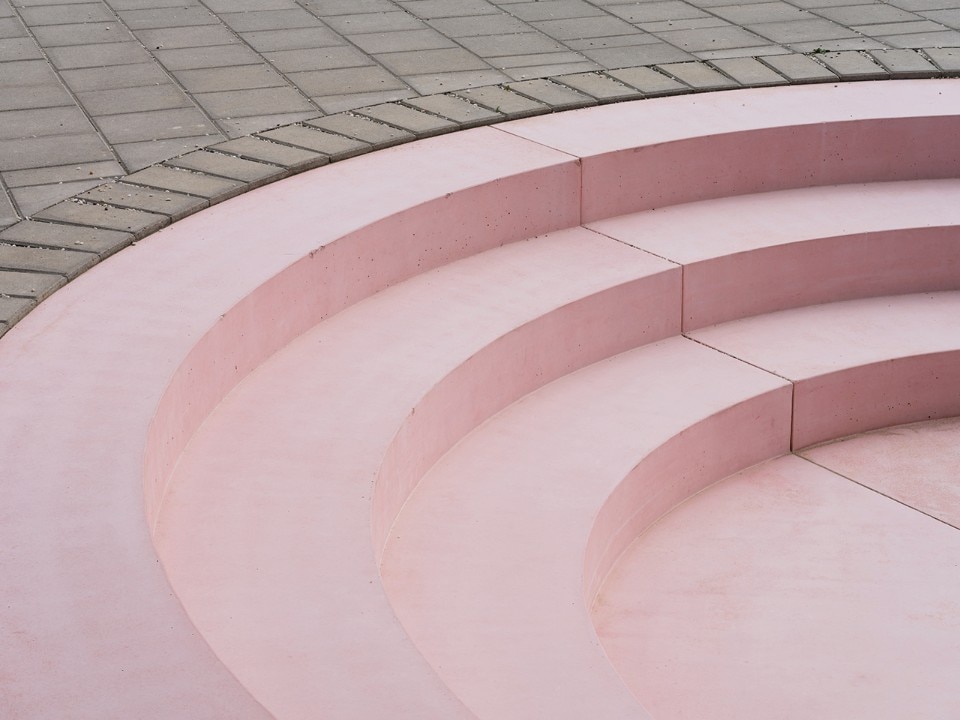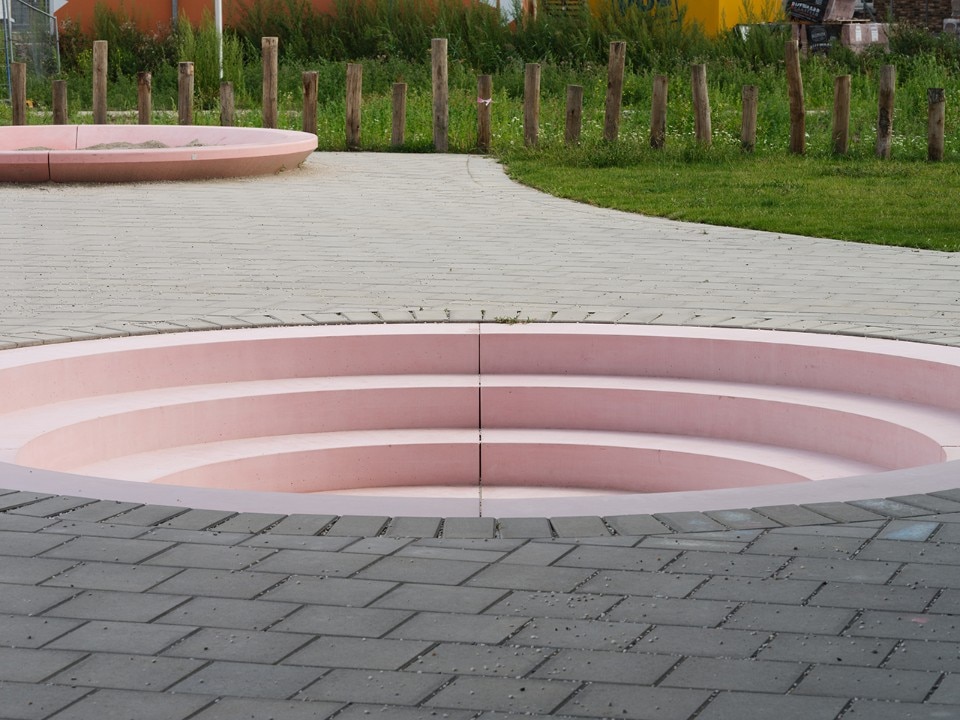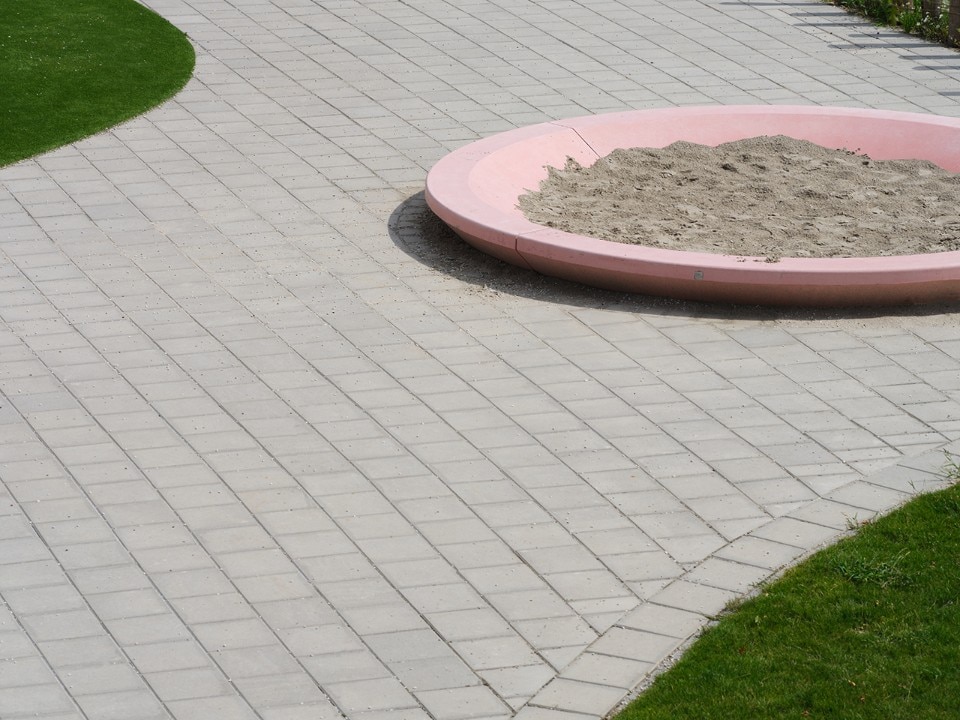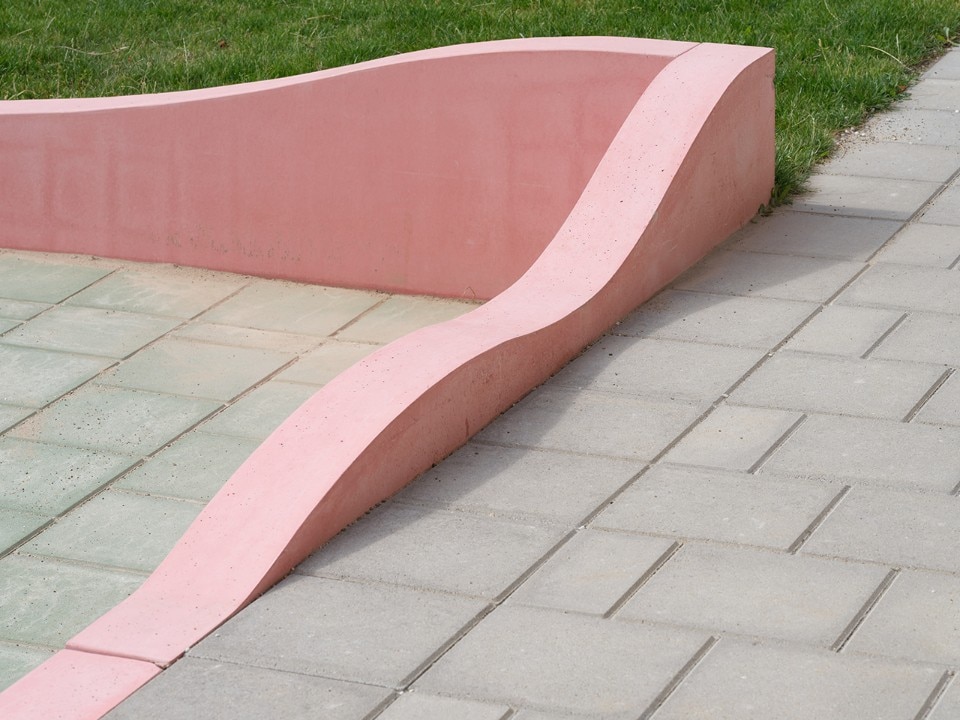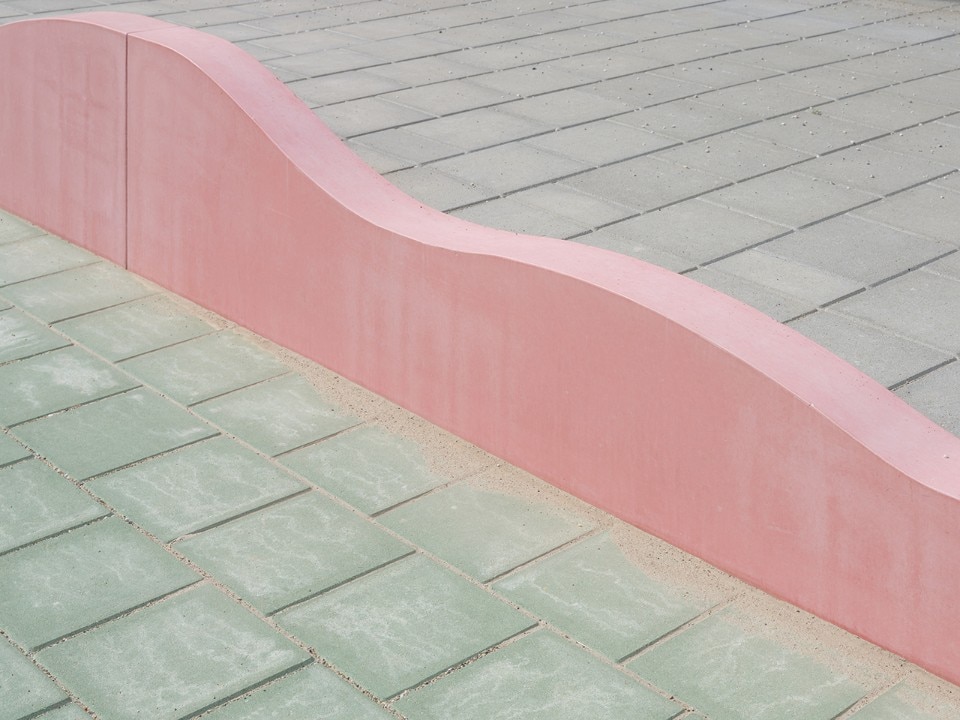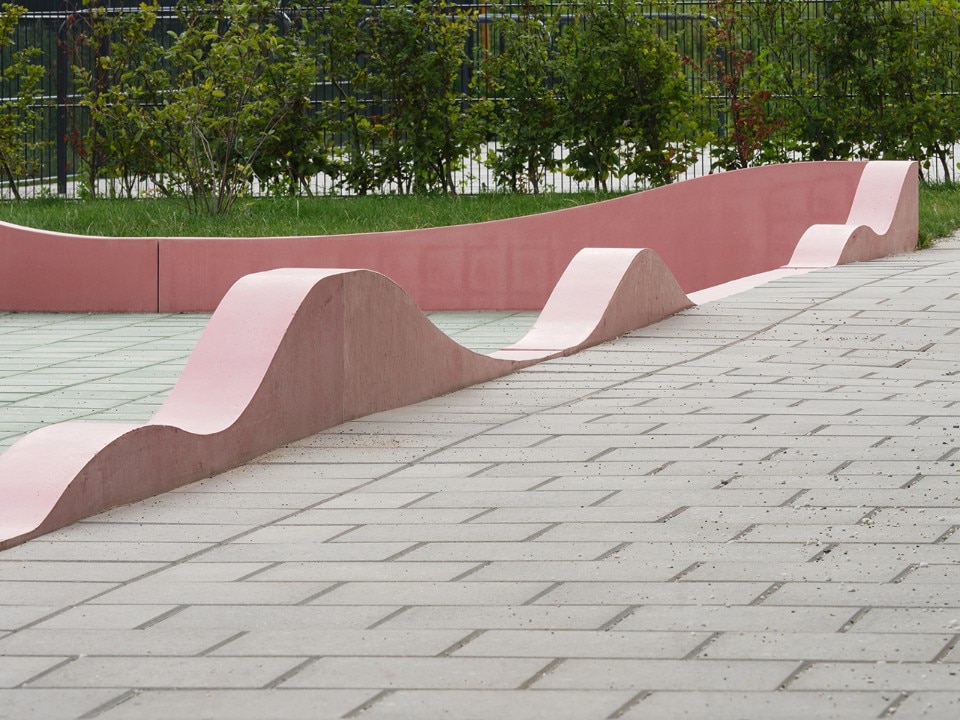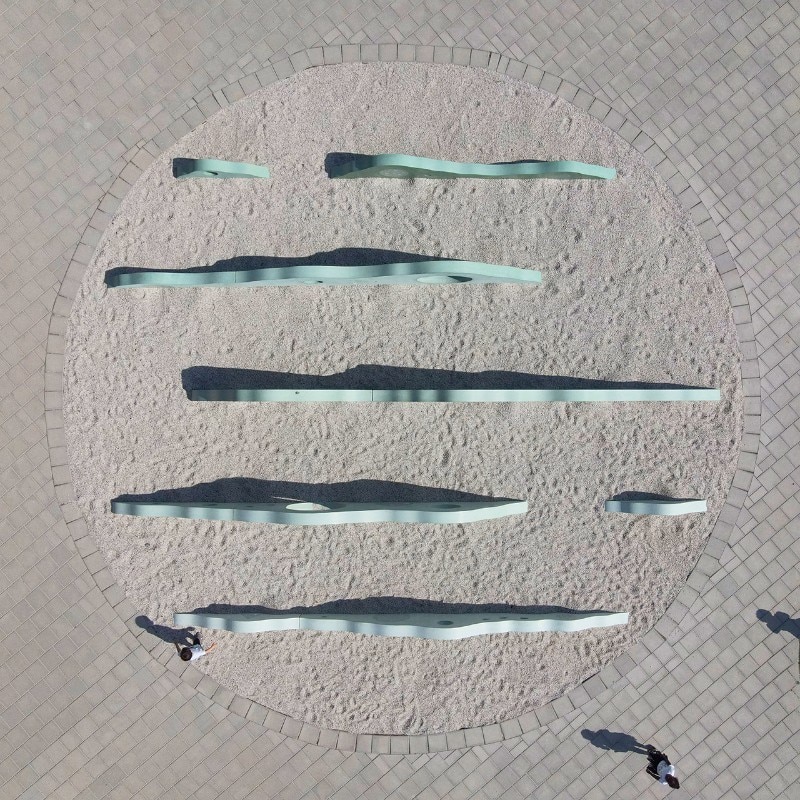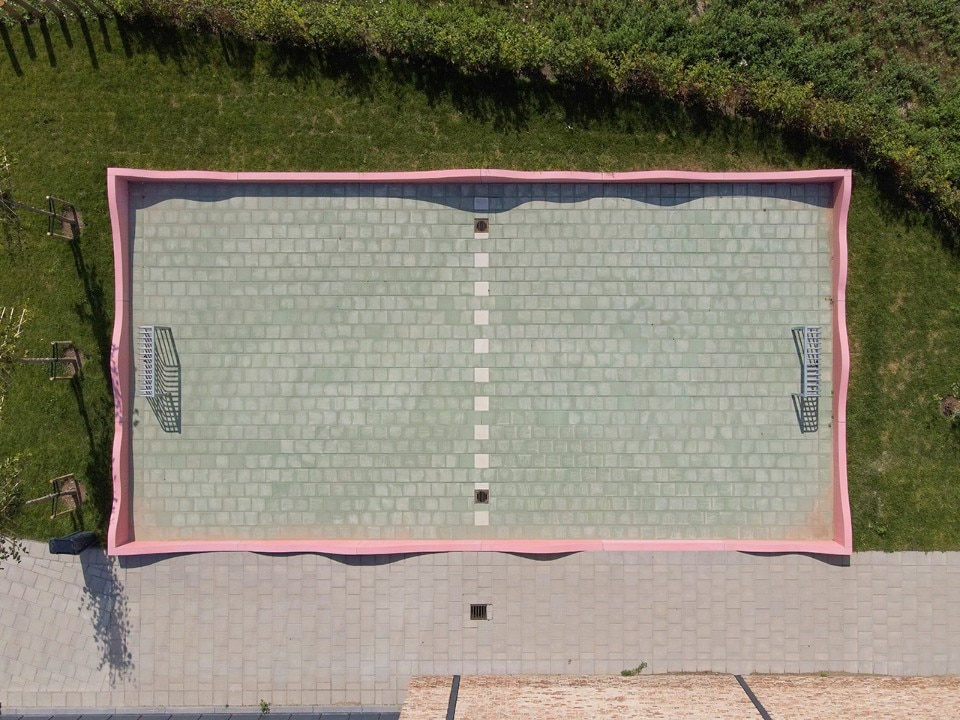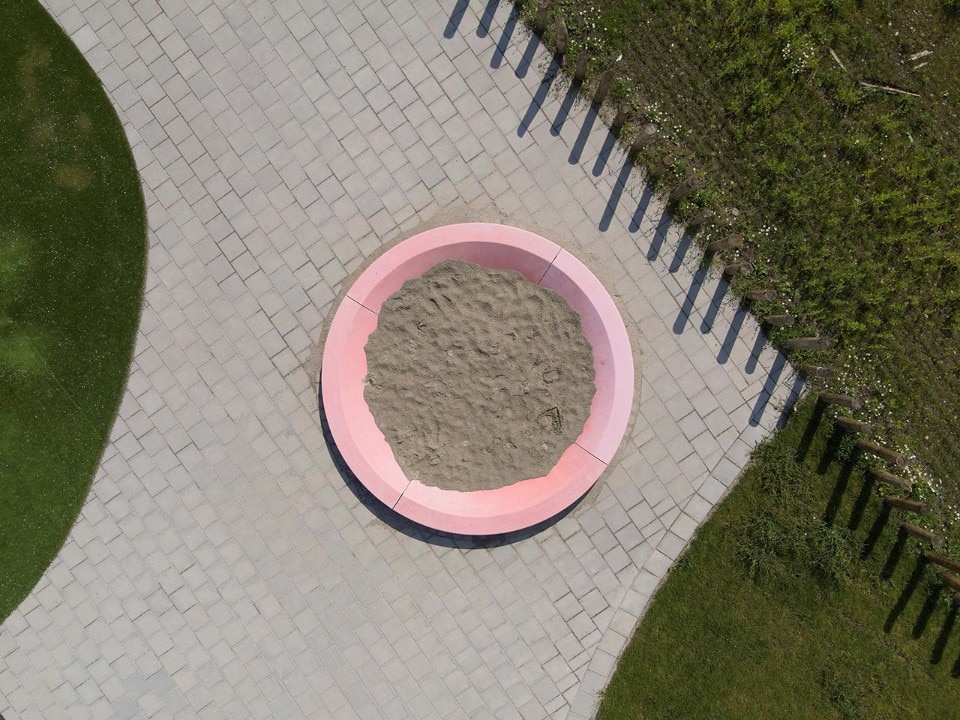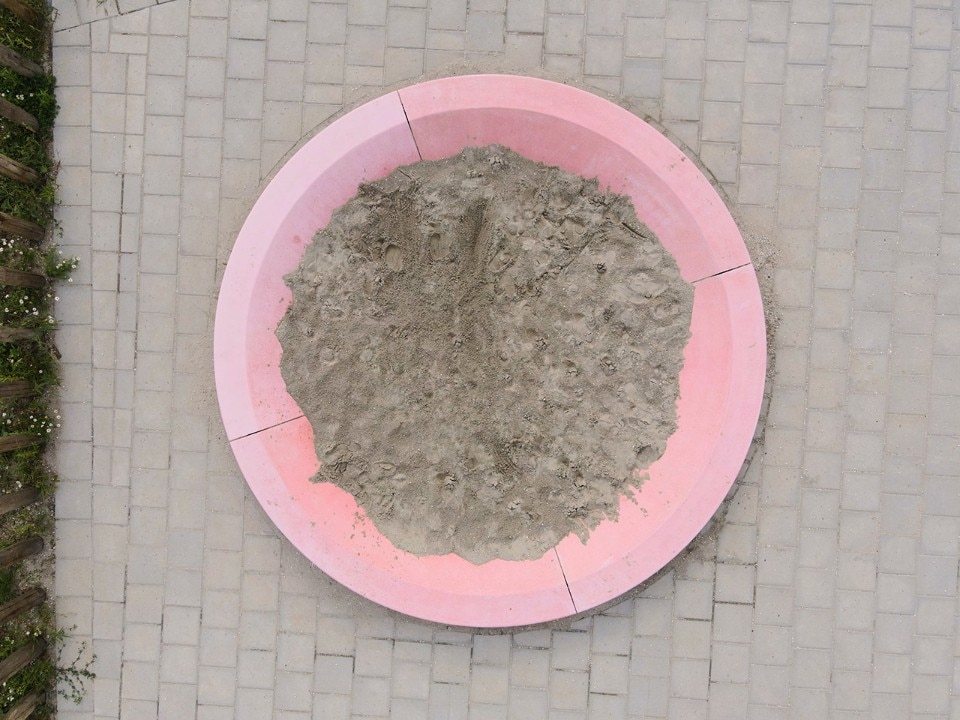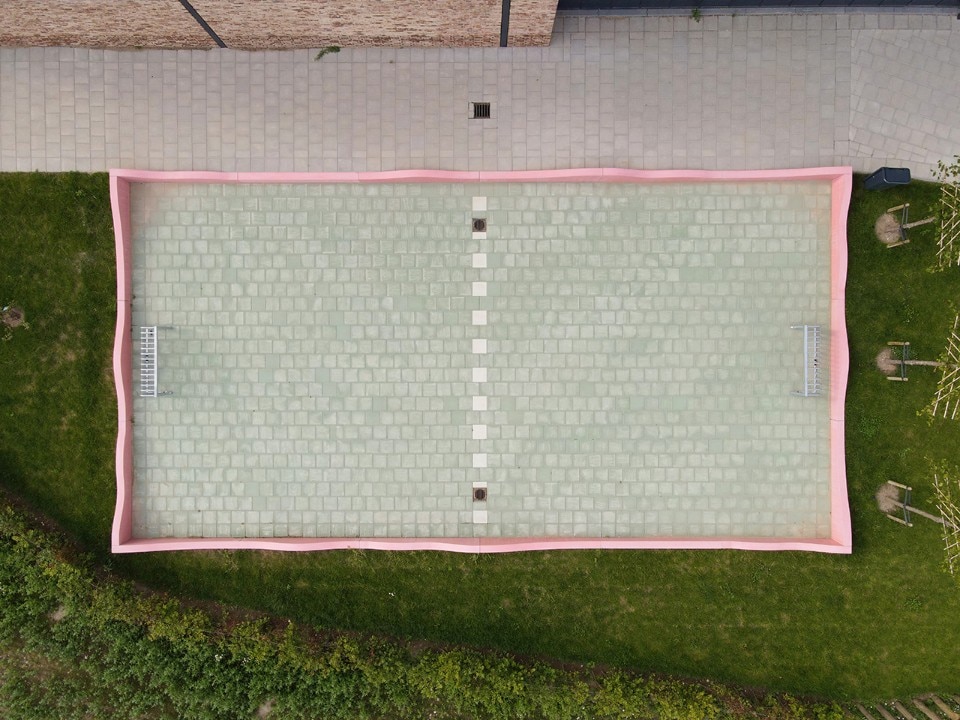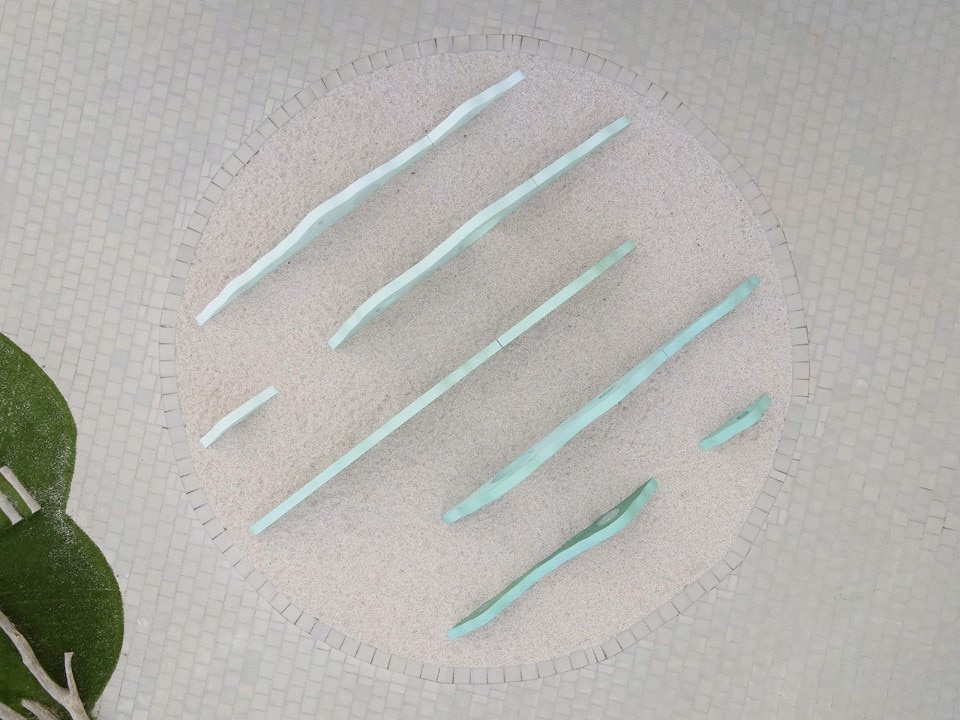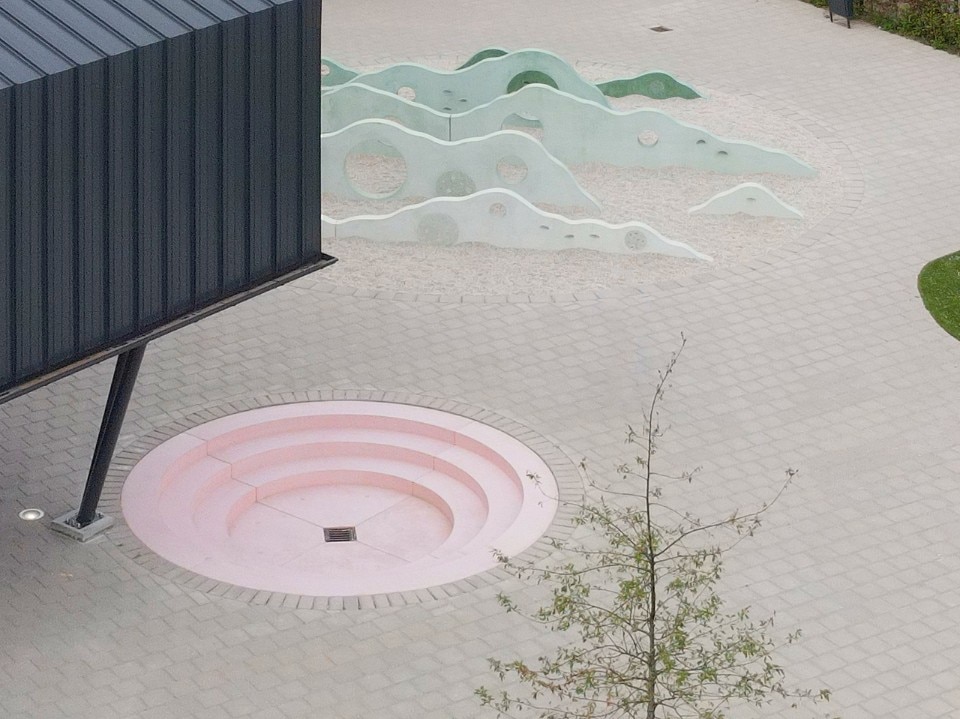The combination of materials and narrative is what makes the approach by Studio Ossidiana unique. The architectural studio based in Rotterdam is directed by Alessandra Covini and Giovanni Bellotti. Horismos playground is the first work built by the couple of Italian architects and is a coherent continuation of a series of experiments with materials such as cement and terrazzo, running parallel with an attitude as storytellers, or rather urban visionaries.
No digital collage, then, but a craftsman’s attitude that in this case is transposed to the scale of architecture. Many of the details of the coloured playground – built for the garden of a primary school in Vleuten, Netherlands – are in fact handmade by the architects, who conducted their experiments together with the concrete company Tomaello.
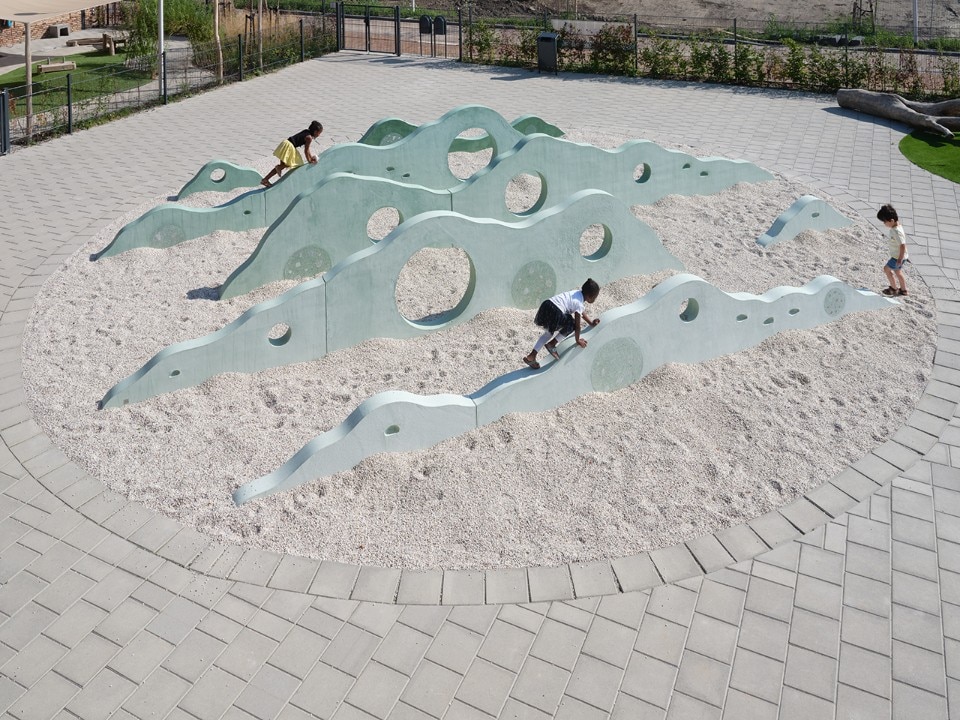
“Horismos is a manifesto project for material research. It is built in coloured and multi-textures concrete, with variations of pigments, stones, sand and cement arranged in different ratios, creating colourful and crafted forms,” the architects told us.
“The elements are casted on a smooth surface, and enriched by a series of ‘tactile’ insertions made by textured shapes. The project was developed through a system of applied research with handcrafted samples and mockups.”
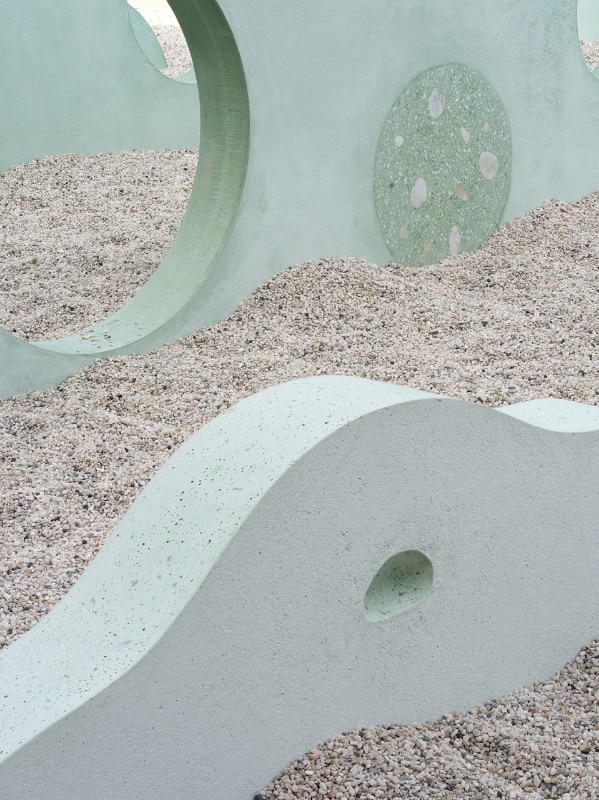
The abstract forms of the project are in line with the theories on the play by philosopher Rob Withagen, according to whom playgrounds must be “open works”, which do not dictate precise actions, but leave freedom of discovery.
“More than a playground, Horismos is conceived as a place for children to invent new rules for playing. The shapes and position of the walls have been conceived without defined purposes, and since its opening it has been fascinating to see the protagonists invent their own use of it. After the opening, we discovered games, actions, and possibilities that could not have been imagined or predicted as designers,” said Studio Ossidiana.
- Project:
- Horismos
- Architect:
- Studio Ossidiana
- Production and engineering:
- Tomaello
- Location:
- Vleuten, Netherlands
- Completion:
- 2020


